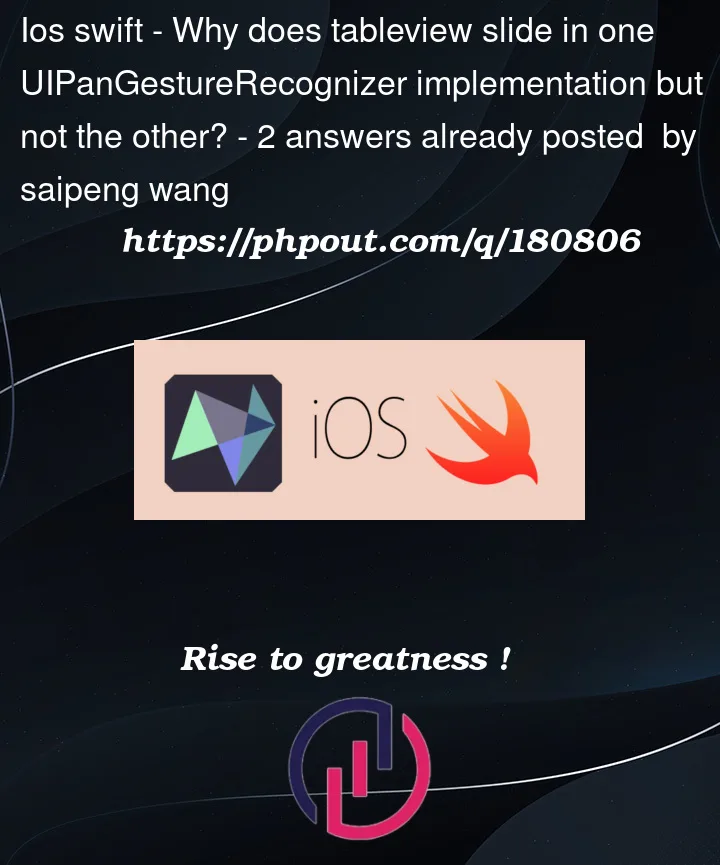UITableView And UIPanGestureRecognizer
I added UIPangesture in two different ways, but I don’t understand why it produces different results I have checked a lot of documents and information, but I can not figure out the reason
override func viewDidLoad() {
super.viewDidLoad()
tableVeiw.frame = self.view.bounds
pan.delegate = self
//Case 1, sliding screen panAction method will print log, tableview does not slide
self.view.addSubview(tableVeiw)
tableVeiw.addGestureRecognizer(pan)
// Case 2, slide the screen without executing panAction method, but tableview slide
self.view.addSubview(tableVeiw)
self.view.addGestureRecognizer(pan)
}
@objc func panAction(sender:UIPanGestureRecognizer) {
print(#function)
}
func gestureRecognizer(_ gestureRecognizer: UIGestureRecognizer, shouldRecognizeSimultaneouslyWith otherGestureRecognizer: UIGestureRecognizer) -> Bool {
print("ges----(gestureRecognizer) other=======(otherGestureRecognizer)")
return false
}




2
Answers
You’re seeing different results in the two cases is due to the way gesture recognizers are handled by the system
In Case 1, you added the pan gesture recognizer to the
tableVeiwusingtableVeiw.addGestureRecognizer(pan). This means that the gesture recognizer is associated with thetableVeiwitself. As a result, when you perform a pan gesture on the table view, the gesture recognizer recognizes it and triggers thepanActionmethodIn Case 2, you added the pan gesture recognizer to the view controller’s view using
self.view.addGestureRecognizer(pan). This means that the gesture recognizer is associated with the view controller’s view. When you perform a pan gesture on the view, the gesture recognizer recognizes it. However, because you have not set any specific target or action for this gesture recognizer, it doesn’t trigger thepanActionmethod. Instead, it allows the gesture to propagate to other gesture recognizers that may be present, such as the one associated with the table view. As a result, the table view can still scroll because its own gesture recognizer is not blocked.To summarize, in Case 1, the pan gesture recognizer is directly associated with the
tableView, so it triggers thepanActionmethod. In Case 2, the pan gesture recognizer is associated with the view controller’s view, and since no specific action is defined for it, it allows other gesture recognizers to handle the gesture. The table view’s gesture recognizer takes precedence and allows the table view to scroll.Adding the pan gesture recogniser to the view (case 2) does nothing because the table view completely obscures that view. You set the table view frame to the view’s bounds.